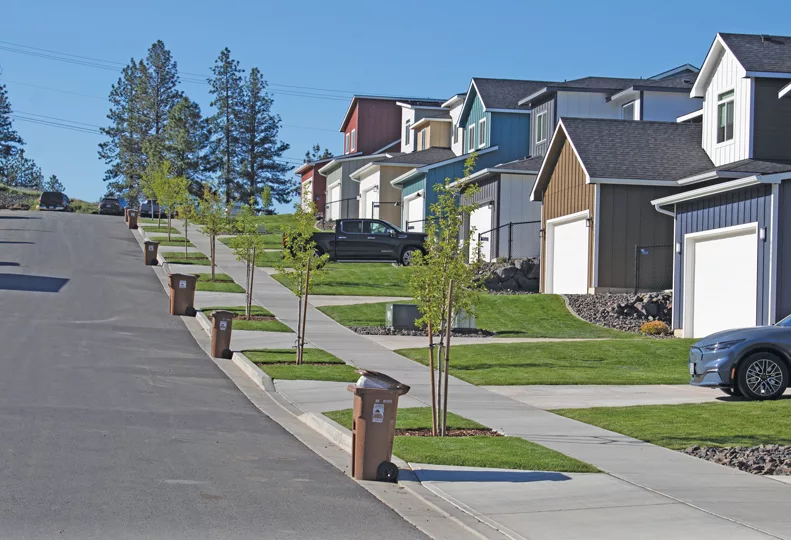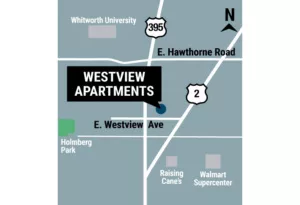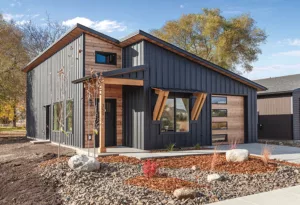
Median-priced homes out of reach for most in Spokane County
State regulations, lack of land among reasons cited for low attainability rate

New houses line new streets in Spokane's Indian Trail neighborhood. One concern among market observers is a lack of available land for such new developments.
| Dylan HarrisNearly two-thirds of families in Spokane County can’t afford to buy a median-priced home in the area, a new report from the Building Industry Association of Washington shows.
The report, titled Housing Attainability in Washington in 2025, appears to be even more troubling for other counties in the state.
Median-priced homes are unaffordable for 80% of Washington families, according to the report compiled by BIAW’s Washington Center for Housing Studies.
“The future of the American Dream of homeownership is grim,” the report states.
While Spokane County’s situation appears to be better than the state as a whole, affordability here might be more dire than the report indicates.
The data used BIAW in the report shows Spokane County’s median household income is $98,100 a year, which is significantly higher than the Washington state Office of Financial Management’s 2024 projection of about $78,000 per year. At that lower number, even fewer families would be eligible to buy a median-priced home.
Either way, the level of home affordability in Spokane County continues to pose challenges for aspiring buyers.
“A lot of households don’t have two incomes, so it’s a really challenging situation for most,” says Joel White, executive officer of the Spokane Home Builders Association, adding that even some households that do have two incomes aren’t qualifying for a home.
The reasons vary for the low housing attainability rate in Spokane County and statewide, White and others in housing-related industries explain.
Higher costs due to government regulations for homes in Washington compared with other states, for example, is among those factors.
According to a March 2025 BIAW report titled The Cost of Regulations 2025, government regulations at all levels account for about 30% of the final price of a new single-family home in Washington. Compared to builders in other states, Washington home builders face a rate of regulatory inflation of 5.7%, the report states.
“The price is still significantly higher than the rest of the nation,” says Janelle Guthrie, vice president of communications for BIAW. “We find that disturbing, and we use (the Housing Attainability Index) to help illustrate to lawmakers why some of their policies may be more misguided if their true goal is to help people afford homes in Washington.”
Guthrie points to the Washington State Energy Code as being among the biggest drivers of regulatory cost increases.
“Here in Washington, our State Building Code Council has consistently adopted its own energy codes and building codes that are inconsistent with the rest of the nation,” she says. “Our builders are needing to obtain products to build homes in Washington or to remodel that are different than what is available nationwide and often much more expensive because they’re on the cutting edge of technology.”
Because it’s so costly to build homes in Washington, Guthrie says, the price-per-square foot limits the number of starter homes being built.
“What we try to convey to lawmakers is that we need to have starter homes for people to be able to climb that ladder of homeownership,” she says.
White echoes those concerns about regulatory costs, although he notes that he understands many of the intentions behind various regulations, including those related to the energy code.
“Their goals are pure,” he says. “How they’re doing it, I would say they’re being a little aggressive about that and not thinking about the short-term impacts.”
Karene Loman, president of Spokane Realtors, says she’s not surprised by the latest housing attainability report.
“The single biggest reason is lack of land,” Loman says.
She suggests a possible solution to creating more land would be to extend growth boundaries through the Growth Management Act—something the city has opted against doing.
As previously reported by the Journal, preliminary data indicates that the city has more than enough capacity for the population and housing allocated by the state through 2046.
Loman contends, however, that not all of the land deemed as buildable land is actually feasible to build on.
White agrees that there is a shortage of land in Spokane County, as well as a shortage of sufficient infrastructure, which makes it more challenging to build additional homes.
“We don’t have some of the infrastructure to continue building on the outskirts of the city, at this point in time at least,” he says.
He is optimistic, however, about the state and the city of Spokane allowing for higher-density housing choices.
“We are seeing more townhomes being built. We have a lot of (Accessory Dwelling Units) being built,” White says. “You’ll see cottage housing. I think you’re going to have some tiny-home villages.”
White says a solution to a lack of available, buildable land is to add more variety to the types of homes being built.
“You might find that it’s going to be more viable to the homebuyers, just from a cost perspective,” he says.
White says he recognizes, however, that other types of homes may not be the top choice for all aspiring homebuyers.
“Your dream of living up on a 10,000-square-foot lot probably isn’t going to happen unless your wealth increases,” says White. “That’s not going to be the average household like the ones we saw in the old days.”




